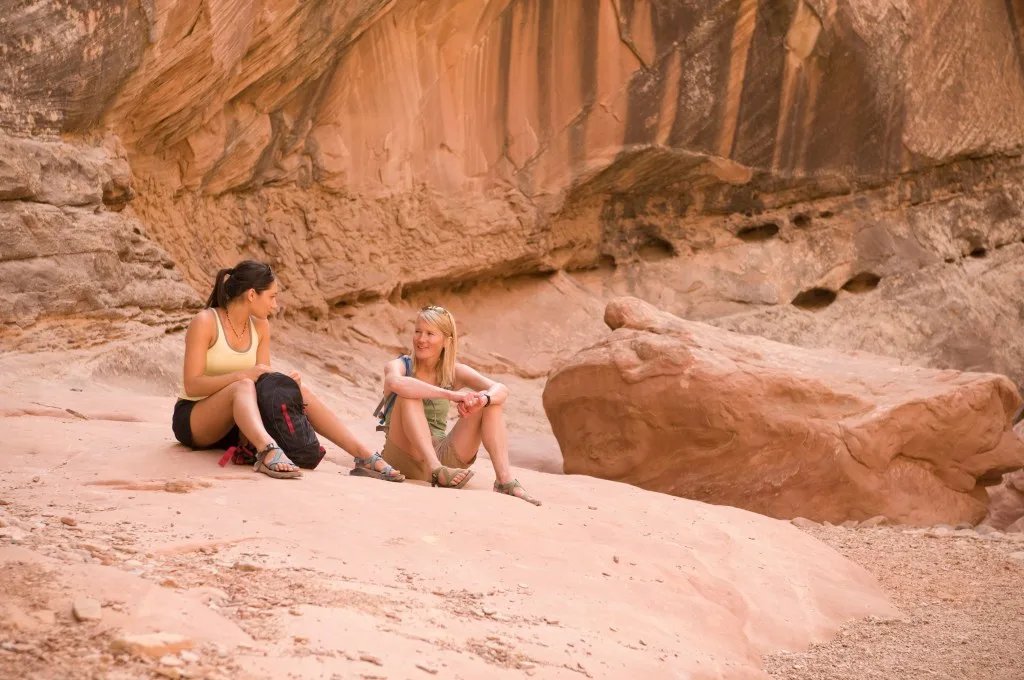There are over 300 federally recognized Native American Reservations in the United States. Thirteen of these are in Minnesota. The four largest reservations by population are the Leech Lake Reservation, the White Earth Reservation, the Red Lake Reservation, and the Mille Lacs Reservation.
However, the Red Lake Reservation operates much differently than the others. Let’s learn more about what makes the Red Lake Reservation unique.
Where Is Red Lake?
Located in north-central Minnesota is the Red Lake Reservation, also known as Red Lake Nation. It’s almost totally within Beltrami County, with land in eight other surrounding counties. About two and a half hours east of the North Dakota border, the reservation sits just north of the White Earth Reservation and the Leech Lake Reservation.
The lake is the largest natural freshwater lake in Minnesota at 444 square miles. A peninsula divides it on the eastern side. According to the 2020 census, the reservation population is around 5,500.
What Tribe Lives on the Red Lake Reservation?
There are four individual communities on the Red Lake Reservation, but they’re all part of the Red Lake Band of Chippewa Indians. In the mid-1930s, this band refused to join six others to form the Minnesota Chippewa Tribe. Instead of forming an electoral government, the people wanted to preserve their traditional system of hereditary chiefs.
The Ojibwe language is the official language of Red Lake, and English is usually the second language spoken.
Pro Tip: We took a closer look to find out Can You Camp on Native American Land?

Can Outsiders Visit Red Lake?
Red Lake Reservation is a “closed reservation,” which means all land is held in common by the tribe. No one owns private property. It also means the tribe has control over non-residents.
If desired, outsiders can be expelled, or their movements limited on the reservation. The tribal government has full sovereignty and has the right to limit who can visit or live on the reservation. As a result, very few non-members live at Red Lake.
Is Red Lake a Dry Reservation?
The tribe operates three casinos on the reservation called the Seven Clans Casinos. The Thief River location is the largest, with a hotel and indoor water park. The Warroad Casino is on Lake of the Woods, and the third casino is in Red Lake on the reservation.
However, because they don’t allow the sale or consumption of alcohol, these casinos are struggling financially and don’t generate much revenue. The Red Lake Reservation is the only dry reservation in Minnesota.
What Towns Are in the Red Lake Reservation?
There are four towns in the Red Lake Reservation. Little Rock has a community center and an Indian-owned store. Ponemah has a community center, an elementary school, Head Start, a health clinic, programming for elders, and powwow grounds. Redby has several tribal businesses along with some tribal programs.
Red Lake is home to the Tribal Government and several tribal programs and businesses. Also located at Red Lake is an elementary, middle, and high school operated by the state of Minnesota. This community is the reservation’s largest.

What Are the 2 Largest Native American Reservations in MN?
The Red Lake Reservation is the third largest Native American Reservation in Minnesota. The Leech Lake Reservation, located in the north-central Minnesota counties of Cass, Itasca, Beltrami, and Hubbard, is the largest population and total area. There are over 11,000 residents. Over 970 square miles make up the land area, and over 330 square miles make up the water area for a total of over 1,300 square miles.
The White Earth Indian Reservation, located in the northwest part of the state, is the largest by land area, with a little over 1,000 square miles. However, there is little water on the reservation, so the total area is only a little over 1,100 square miles. At the time of the 2020 census, over 9,700 residents lived on the White Earth Indian Reservation.
Unlike the Red Lake Reservation, the Leech Lake Reservation and the White Earth Indian Reservation are part of the six bands that make up the Minnesota Chippewa Tribe. The communities in both reservations are quite different from the Red Lake communities. Numerous settlements run throughout the reservations, and many residents are of mixed blood. Less than half of the population is Native American.
Pro Tip: The USA is filled with beautiful places to explore, like these 5 Unusual Places to Camp in the USA.
Is Red Lake Worth Checking Out?
If you’re looking to visit an Indian Reservation, there are more “open” reservations in the country that are more welcoming to visitors than Red Lake Reservation. Although you might be permitted to visit by the Tribal Council, you’ll probably feel like an outsider who isn’t wanted.
According to the Red Lake Accountability Decree, “The Red Lake Tribal Council will preserve, protect, and maintain our land base, natural resources, health and welfare, cultural heritage, language, and traditions to ensure our children and future generations will continue to have the resources to live as sovereign people.”
The independence of the tribe and lack of outside influences keep Red Lake Reservation authentic to its heritage.
So you might want to consider checking out White Earth Indian Reservation instead if you’re hoping to learn more about the Native American culture in Minnesota.
Have you ever visited an Native American Reservation? What was your experience like? Tell us about your experience in the comments.
Discover the Best Free Camping Across the USA
To be honest with you, we hate paying for camping. There are so many free campsites in America (with complete privacy).
You should give it a try!
As a matter of fact, these free campsites are yours. Every time you pay federal taxes, you’re contributing to these lands.
Become a FREE CAMPING INSIDER and join the 100,000 campers that love to score the best site!
We’ll send you the 50 Best Free Campsites in the USA (one per state). Access the list by submitting your email below: